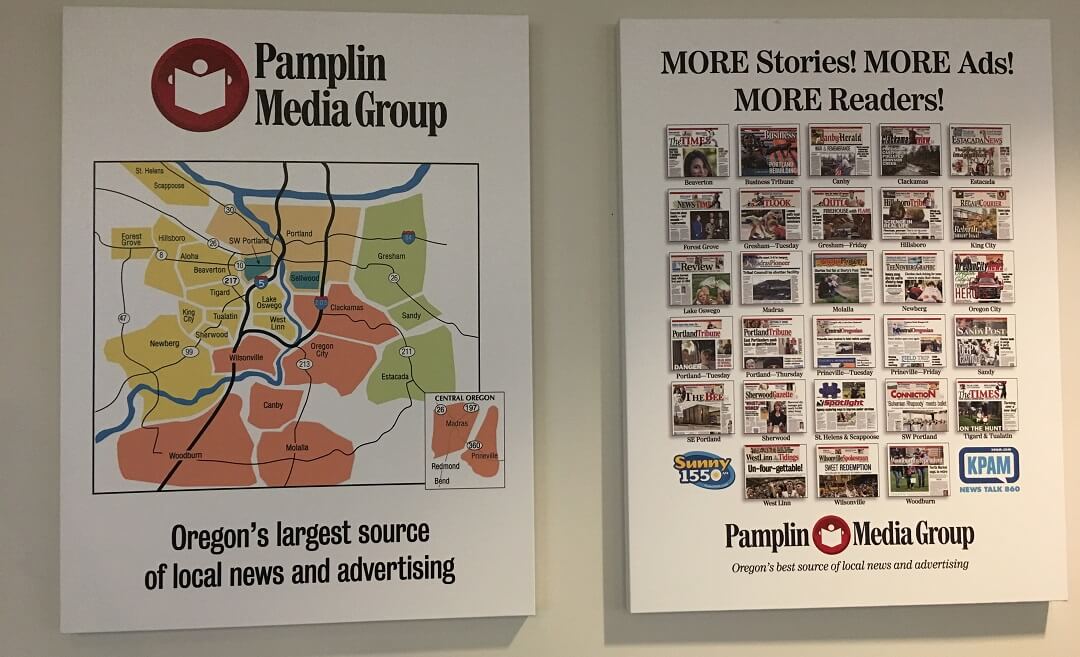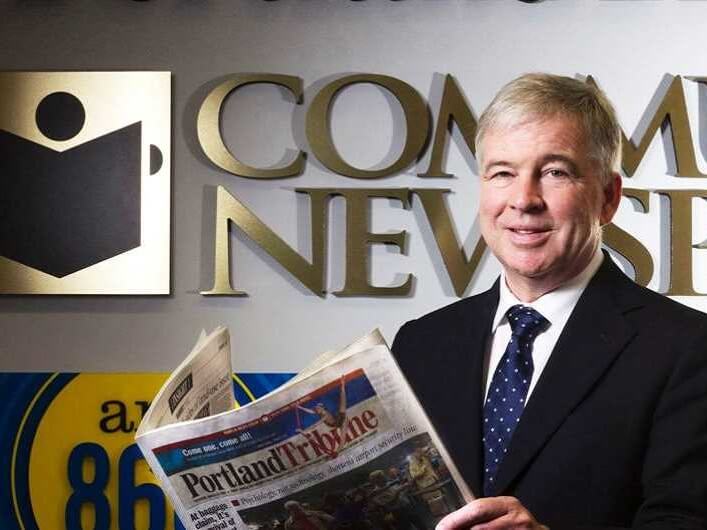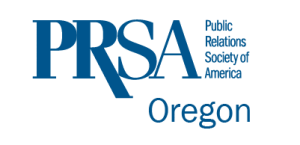The Importance of Community Newspapers
A Conversation with Pamplin Media Group
We all have a sense of the power that The New York Times or even The Oregonian wield, but less appreciated is the influence of a Beaverton Valley Times or a Forest Grove News Times and the countless other community newspapers around Portland’s metro area and across the nation.
But PR professionals understand the power of local papers for their clients, where getting in front of local communities is critical to their success.
In this episode of PR Talk, I sat down with Mark Garber, publisher of the Pamplin Media Group.
We talked about the history of the Pamplin Media Group, the role of a publisher, as well as the current challenges community newspapers are facing and what that may mean for PR professionals.
The Pamplin Media Group owns and publishes 25 papers throughout Oregon, 21 of which are published weekly or twice weekly. Its flagship paper is the Portland Tribune, which was founded in 2001. Some of the other papers in the group have been publishing more than 100 years.
Mark has a long career in newspapers. He studied journalism at the University of South Carolina and started his career as a reporter at a newspaper near the university covering cops and city government.
Later, he moved to Oregon and worked at a number of community newspapers in the Portland metro area. About 10 years into his career, he transitioned to publishing community newspapers in Gresham and Springfield. He was the publisher of the East Oregonian in Pendleton before joining the Portland Tribune/Pamplin Media Group in 2001.
He said you can think of a publisher as the CEO of the business of a newspaper.
“All departments within a newspaper ultimately report to the publisher,” Mark said in our interview. “And the publisher is the one link traditionally between the news side and the advertising side and the circulation side. Newspapers traditionally have operated with a pretty good separation between news and advertising. But there are times when those two aspects of the business do work together. And publishers provide that link and can essentially work with both sides of the business to achieve overall goals. In the digital age, those lines are getting more and more blurred and there is more and more cooperation between the news and advertising side.”
What is the difference between what is published online and in print?
Mark said it is not always that different what is being published online and what is being published in the newspapers.
“We put all the breaking news online obviously and then a lot of that news by the time our print editions come out, because we’re either weekly or twice a week, might not be all that relevant anymore,” he said. “We’re daily or actually more than a daily online; and in our printed editions, we try to be a little more reflective of what’s happened over the past few days.”
In terms of community news – the on-the-ground coverage of all of the communities, whether it’s Prineville, Madras, Gresham, Lake Oswego or Beaverton – Pamplin’s newspapers are one of the only remaining sources with reporters covering those communities.
The print and digital audiences for newspapers
More than 350,000 people read one of the Pamplin publications in print each month.
But more than 1 million people are coming to their websites each week and consuming the news there in some form or another.
That is a huge digital audience.
“And you know the interesting thing about that is they want the same thing that the print readers want, they just want it in a different form,” Mark said. “And there’s not a lot of overlap between those two audiences.”
Mark said one of the things that surprised him is that those are two distinct audiences. “Some people only read us in print, and some people only read us digitally. And it’s not all generational, but certainly there’s an age factor there, too.”
His point is that within their group of publications, they are delivering that advertising or marketing message with content about the local community within a geographic area that people care about.
“And whether it’s in print or on digital, we can help deliver that marketing message and still be very targeted in how we do it,” Mark said.

Making money in newspapers and what that means for PR
As Mark points out, producing all that local news is a big investment with more than 100 news people around the state. And the evolution of newspapers and increased competition from other players – such as Craigslist – has meant changing the business model for newspapers with more native advertising or the addition of paywalls to digital sites.
Mark said they have added paywalls to some of the newspapers’ websites, which is something I said worried PR pros who are concerned their clients won’t see the benefit of getting in a publication if the public can’t freely access it.
Mark understood my concern, but also made a couple of interesting points.
“One is that if someone is willing to pay for the news, and this is pretty much true of our print subscribers, they’re households who have discretionary income, they’re a higher demographic typically,” Mark said. “And they are people who are interested in their communities and want to know what’s happening with their school district, with their city government, with their neighbors, and they’re actively involved citizens. It’s a very highly desirable demographic for any business to reach.”
He said they are aware of the challenges paywalls bring to promoting stories on social. One way they’ll address this is by adding more to the content being shared on social so readers have a better sense of the story.
And, he said, paywalls don’t require an annual subscription. He said readers can pay a low cost to be able to access one particular story.
Whether its social or other unforeseen challenges, Mark said, they are tracking visitor traffic to the sites with paywalls to make sure they don’t dramatically lose readers.
PR tips from a publisher
I asked Mark if he had any pro tips for how PR people can better get into their local newspapers and, specifically, the Portland Tribune. In addition to Mark’s tips, I recommend listening to PR Talk episode 13 for our interview with Gary Stein, editor for the Lake Oswego Review, one of the Pamplin papers, for more in-depth tips.
Mark had two excellent tips: make it local and establish connections.
It may be a bit harder to do, but Mark said by localizing your PR message to “each community or as many communities as you can, that’s going to greatly increase the chances that item’s going to get in the paper because a local person is involved.”
His second tip is it is much more helpful to establish some sort of personal connection or relationship with the reporter or the editor at the paper. He said his reporters and editors “get literally hundreds, if not thousands, of e-mails every day.”
A press release sent by a stranger may not even get read if it comes as an e-mail. But if you could establish a relationship with that person, take them out to coffee or even just have a couple phone conversations with them, or to drop by the office to say, “Hey, this is who I am and here’s the type of news that I’d like to send you. How can I do that in a way that is helpful to you?”
“Then when you send an email, the reporter will think, ‘I know Amy. I know she’s interested in giving me legitimate news.’ I think that is a good thing.”
About the guest: Mark Garber
Mark Garber is President and Publisher of Pamplin Media Group. He received a BS in Journalism from the University of South Carolina in 1977. Since then, he has worked at numerous newspapers and publishing companies both in the eastern US and in Oregon, including those in Gresham, Pendleton, Springfield, and Portland. As Pamplin’s President and Publisher, he oversees all of its operations.
Connect and follow Mark on social media:
This episode of PR Talk is brought to you by PRSA Oregon
Throughout Oregon and Southwest Washington, PRSA provides members with networking, mentorship, skill building and professional development opportunities – whether you are a new professional fresh out of college or a skilled expert with 20 years in the industry. Check out PRSAoregon.org for more information on how membership can help you grow and connect.
PR Talk is sponsored by monday
In such a fast-paced, multi-faceted work environment, it can be tough to stay on top of everything. monday is the collaboration tool trusted by businesses of all kinds to help cut down the clutter and streamline productivity. Learn more at monday.com and signup for a free trial. You’ll see in no time why so many teams around the world are choosing monday for their project management needs.
PR Talk listeners can use the coupon code BetterExecute for a 15% discount.












